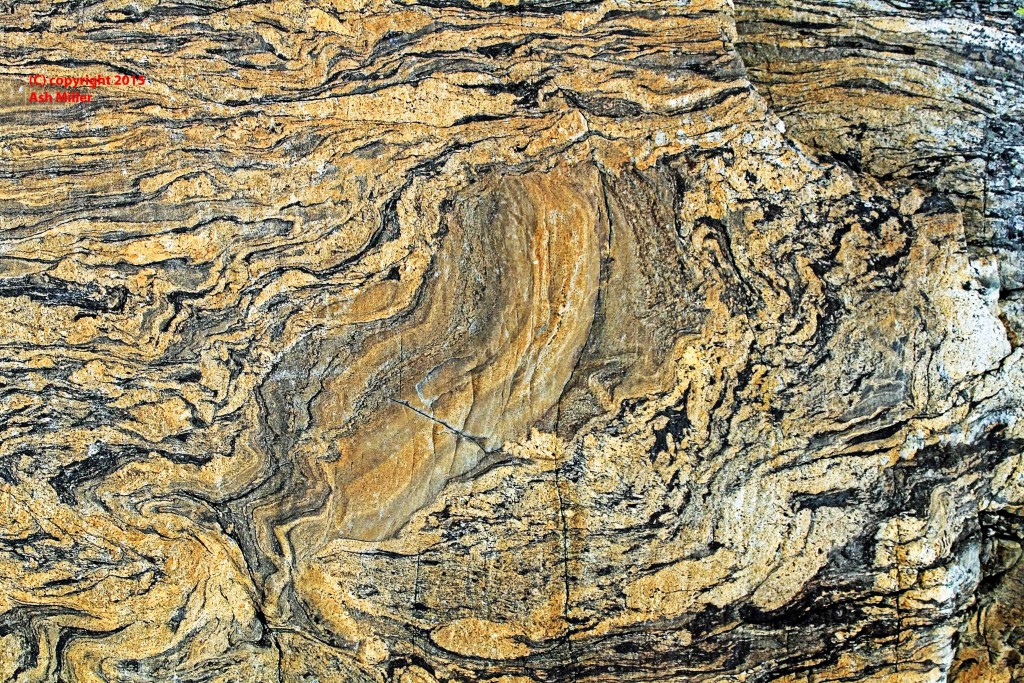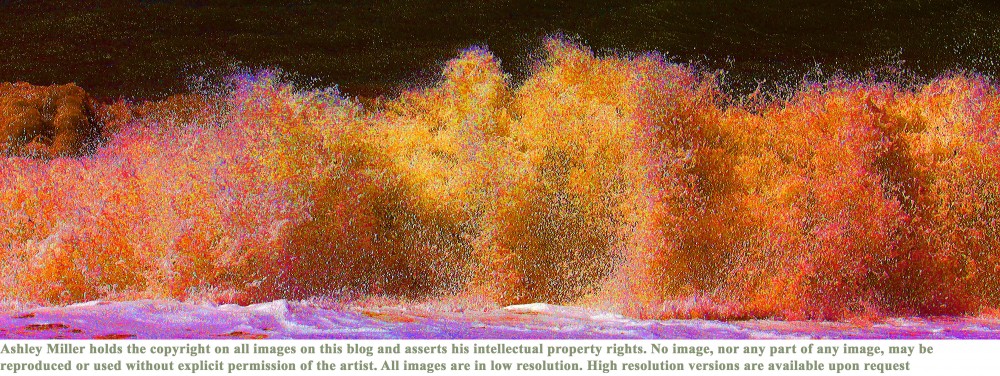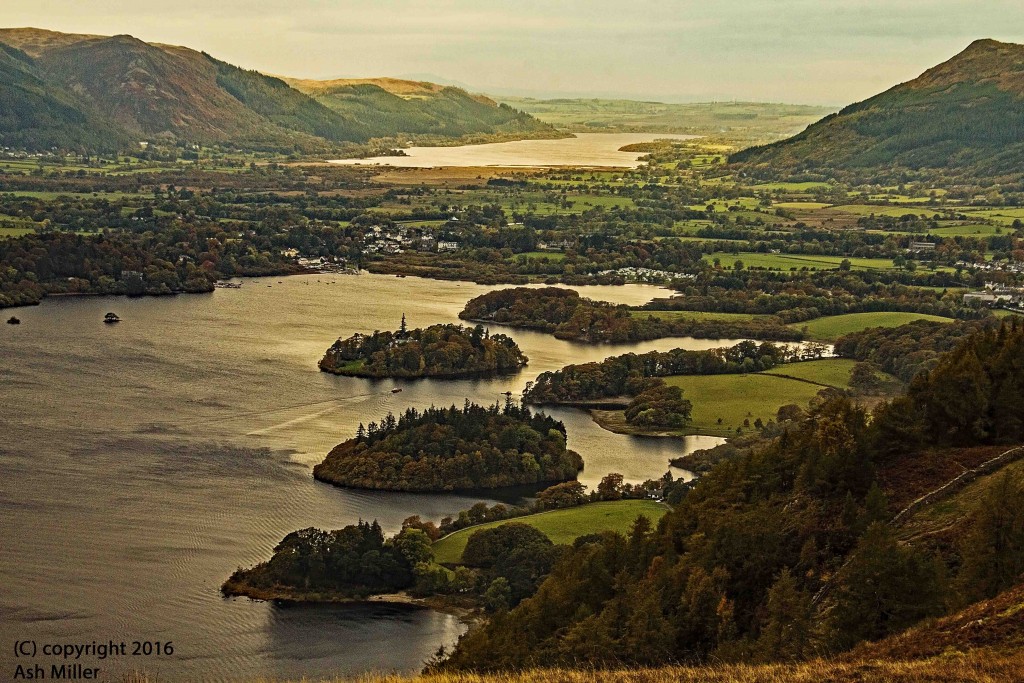I saw a quote the other day on facebook; ‘Geology is the music of the Earth’. I liked it yet felt that Meteorology was a better link to music; now ‘Geology is the dance of the Earth’ or ‘Geology is the dance of Gaia’ appeals to me as a geologist, photographer and writer of this blog. Cue some geological images.
This first is banded gneiss from southern Sweden; a real geologist explained it to me as a meta greywacke. A greywacke is formed from mud, sands, rocks slumping down the edge of a continental shelf in a turbidity current, often triggered by an earthquake, or just plain gravity (weight of sediment). This jumbled sediment will, over time, be compressed by the weight of new sediment falling on top of it, lose water, and consolidate to rock. If, however, the rock is caught in a zone of plate ‘collision’ it will come under extreme pressure and high temperature, and a meta(morphosed) greywacke. If the temperature dominates pressure and is high enough, it will melt and form volcanoes along the plate boundary (think Pacific rim). If pressure dominates temperature then it will start to re-crystallise and re-orientate in situ and form bands at right angles to the direction of pressure. And the rock now being in a state that is loosely analogous to plastic, if the pressure continues, the bands will be twisted and deformed; a banded gneiss …. actually if the rock was originally mostly mud it will go from mud to shale to slate to schist, if sands and gravel from sands to sandstone to gneiss, and if animal shells then from shells to limestone to marble.



